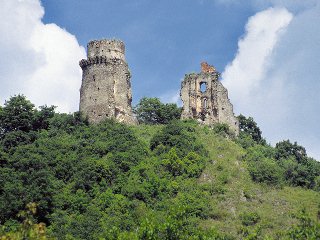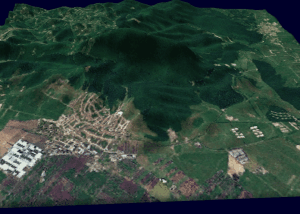|
George Baksa
George from the kindred Baksa ( hu, Baksa nembeli György; died after 1307) was a Hungarian lord and a distinguished military leader in the second half of the 13th century. He was a key supporter of Ladislaus IV of Hungary and participated in various military campaigns during his reign. He successfully fought against the Mongols in Hungary and Poland. After granting large-scale domains in Upper Hungary, he was also known as George of Sóvár or George the Salty ( hu, Sóvári "Sós" György, pl, Jerzy z Sovaru) and became eponymous progenitor of the Sós (or Soós) de Sóvár noble family. Biography Early life George was born around 1250 into the widely extended ''gens'' (clan) Baksa, as one of the younger sons of Simon I, the ''ispán'' of the royal forest of Patak in 1262. He had five brothers, Baksa, Thomas III, Simon II, Denis and Derek, the ancestors of the Szerdahelyi, Sztritei, Csapi, Bocskai and Szécsi de Gálszécs noble families, respectively.Engel: ''Genealógia'' ... [...More Info...] [...Related Items...] OR: [Wikipedia] [Google] [Baidu] |
Szabolcs County
Szabolcs was an administrative county (Comitatus (Kingdom of Hungary), comitatus) of the Kingdom of Hungary. Its territory is now part of Hungary, except for three villages which are in the Zakarpattia Oblast of Ukraine. The capital of the county was Nyíregyháza. Geography Szabolcs county shared borders with the counties of Borsod County, Borsod, Zemplén County, Zemplén, Ung County, Ung, Bereg County, Bereg, Szatmár County, Szatmár, Bihar County, Bihar and Hajdú County, Hajdú. It was situated mostly south of the river Tisza. Its area was 4,637 km² around 1910. History Szabolcs is one of the oldest counties of the Kingdom of Hungary. In the 17th century, the towns of Hajduk (Kingdom of Hungary), Hajdú separated from the county, creating the Hajdú district. The capital of Szabolcs County was initially Szabolcs (village), Szabolcs (now a village), later Nagykálló took over this role (1747-1867), and since 1867 the capital was moved to Nyíregyháza. After World ... [...More Info...] [...Related Items...] OR: [Wikipedia] [Google] [Baidu] |
Stephen V Of Hungary
Stephen V ( hu, V. István, hr, Stjepan V., sk, Štefan V; before 18 October 1239 – 6 August 1272, Csepel Island) was King of Hungary and Croatia between 1270 and 1272, and Duke of Styria from 1258 to 1260. He was the oldest son of King Béla IV and Maria Laskarina. King Béla had his son crowned king at the age of six and appointed him Duke of Slavonia. Still a child, Stephen married Elizabeth, a daughter of a chieftain of the Cumans whom his father settled in the Great Hungarian Plain. King Béla appointed Stephen Duke of Transylvania in 1257 and Duke of Styria in 1258. The local noblemen in Styria, which had been annexed four years before, opposed his rule. Assisted by King Ottokar II of Bohemia, they rebelled and expelled Stephen's troops from most parts of Styria. After Ottokar II routed the united army of Stephen and his father in the Battle of Kressenbrunn on 12 July 1260, Stephen left Styria and returned to Transylvania. Stephen forced his father to cede all t ... [...More Info...] [...Related Items...] OR: [Wikipedia] [Google] [Baidu] |
Finta Aba
Finta from the kindred Aba ( hu, Aba nembeli Finta; died 1287) was a Hungarian lord in the Kingdom of Hungary, who served as Palatine of Hungary from 1280 to 1281. He is best known for capturing King Ladislaus IV of Hungary in early 1280. Family Finta was born into the Széplak branch of the prestigious and fairly extended Aba kindred as the son of ''ispán'' David Aba. He also had at least three siblings: Palatine Amadeus Aba, who became a powerful oligarch at the turn of the 13th and 14th centuries, Judge royal Peter Aba and a sister who engaged to Simon Kacsics from the Zagyvafő branch in 1290. Finta had a daughter, Klara who married to Julius III Kán, ''ispán'' of Baranya County (also known as Julius Siklósi) and died before 1300.Engel: ''Genealógia'' (Genus Aba 1., Széplak branch) Career In 1277–1278, when declared to be of age, Ladislaus IV of Hungary successfully defeated and eliminated the aspirations of power of Roland, son of Mark and the entire Geregye clan ... [...More Info...] [...Related Items...] OR: [Wikipedia] [Google] [Baidu] |
Transylvania
Transylvania ( ro, Ardeal or ; hu, Erdély; german: Siebenbürgen) is a historical and cultural region in Central Europe, encompassing central Romania. To the east and south its natural border is the Carpathian Mountains, and to the west the Apuseni Mountains. Broader definitions of Transylvania also include the western and northwestern Romanian regions of Crișana and Maramureș, and occasionally Banat. Transylvania is known for the scenery of its Carpathian landscape and its rich history. It also contains Romania's second-largest city, Cluj-Napoca, and other iconic cities and towns such as Brașov, Sibiu, Târgu Mureș, Alba Iulia and Sighișoara. It is also the home of some of Romania's List of World Heritage Sites in Romania, UNESCO World Heritage Sites such as the villages with fortified churches in Transylvania, Villages with fortified churches, the Historic Centre of Sighișoara, the Dacian Fortresses of the Orăștie Mountains and the Rosia Montana Mining Cultural Landsc ... [...More Info...] [...Related Items...] OR: [Wikipedia] [Google] [Baidu] |
Spiš
Spiš (Latin Latin (, or , ) is a classical language belonging to the Italic branch of the Indo-European languages. Latin was originally a dialect spoken in the lower Tiber area (then known as Latium) around present-day Rome, but through the power of the ...: ''Cips/Zepus/Scepus/Scepusia'', german: Zips, hu, Szepesség/Szepes, pl, Spisz) is a region in north-eastern Slovakia, with a very small area in south-eastern Poland (14 villages). Spiš is an informal designation of the territory, but it is also the name of one of the 21 List of tourism regions of Slovakia, official tourism regions of Slovakia. The region is not an administrative division in its own right, but between the late 11th century and 1920 it was an administrative county of the Kingdom of Hungary, (see separate article Szepes county). Etymology The name is probably related to the appellative ''spiška'', ''špiška'' known from Slovak (Eastern Slovakia and Orava (region), Orava) and Moravian dialects (Han ... [...More Info...] [...Related Items...] OR: [Wikipedia] [Google] [Baidu] |
Oligarch (Kingdom Of Hungary)
An oligarch or provincial lord ( hu, tartományúr; formerly the term ''petty king'' was also used) was a powerful lord who administered huge contiguous territories through usurping royal prerogatives in the Kingdom of Hungary in the late 13th and early 14th centuries. List of oligarchs Interregnum (1301–1310) * Amadeus Aba ( Northeast Hungary) * Stephen Ákos ( Borsod) * Stephen Babonić ( Lower Slavonia) * James Borsa ( Transtisia) * Matthew Csák ( Northwest Hungary) * Ugrin Csák ( Upper Syrmia) * Dujam Frankopan ( Primorje) * Ladislaus Kán (Transylvania) * Henry Kőszegi ( Southern Transdanubia and Upper Slavonia) * Ivan Kőszegi (Western Transdanubia) * Stephen Dragutin Nemanjić ( Lower Syrmia) * Nicholas Pok ( Szamosköz) * Dominic Rátót (Nógrád) * Paul Šubić (Croatia , image_flag = Flag of Croatia.svg , image_coat = Coat of arms of Croatia.svg , anthem = "Lijepa naša domovino"("Our Beautiful Homeland") , ... [...More Info...] [...Related Items...] OR: [Wikipedia] [Google] [Baidu] |
Bihar County
Bihar was an administrative county (comitatus) of the Kingdom of Hungary and a county of the Eastern Hungarian Kingdom and Principality of Transylvania (since the 16th century, when it was under the rule of the Princes of Transylvania). Most of its territory is now part of Romania, while a smaller western part belongs to Hungary. The capital of the county was Nagyvárad (now Oradea in Romania). Albrecht Dürer's father was from this county. Geography Bihar County was situated along the upper courses of the rivers Körös, Sebes-Körös, Fekete-Körös and Berettyó. The medieval county also included ''Kalotaszeg'' region (now Țara Călatei in Romania). The total territory of the medieval county was around . After 1876, Bihar county shared borders with the Hungarian counties Békés, Hajdú, Szabolcs, Szatmár, Szilágy, Kolozs, Torda-Aranyos and Arad. The western half of the county was in the Pannonian plain, while the eastern half was part of the Apuseni mounta ... [...More Info...] [...Related Items...] OR: [Wikipedia] [Google] [Baidu] |
Geregye (genus)
Geregye (also ''Geregen'') was the name of a ''gens'' (Latin for "clan"; ''nemzetség'' in Hungarian) in the Kingdom of Hungary in the 13th century. The Egervári family originated from this clan. The ancient lands of the kindred were in Vas County (today Gyanógeregye and Egervár). Later Judge royal Paul Geregye's branch acquired possessions in Szolnok and Kraszna Counties, where tried to establish dominion independently from the king, alongside other prominent clans ( Abas, Gutkeleds, Kőszegis e.g.). However, Ladislaus IV of Hungary defeated and eliminated their aspirations in 1277–1278, and this branch lost all of its political influence. Their lands and estates were governed by the Borsa clan following their downfall.Zsoldos 1997, p. 80. Members * Eth I ( fl. 1200–1215), Voivode of Transylvania ** Paul ( fl. 1236–1264; d. before 1271), Judge royal *** Nicholas ( fl. 1256–1279), Judge royal, Voivode of Transylvania *** Stephen ( fl. 1256–1278), ''ispán'' of ... [...More Info...] [...Related Items...] OR: [Wikipedia] [Google] [Baidu] |
Kun Laszlo
Kun may refer to: People with the surname * András Kun, Franciscan priest * Béla Kun, Hungarian communist politician * Éva Kun, Hungarian fencer * Kun Can, Chinese painter * Roland Kun, Nauruan politician * Ruben Kun, President of Nauru (1996–1997) * Russ Kun, President of Nauru (2022–) * Russell Kun, Nauruan politician People with the given name or nickname * Cai Xukun Chinese singer, debut from idol producer on the 6th April 2018 * Cao Kun (1862–1938), President of the Republic of China * Chen Kun, Chinese actor and singer * Chen Kun (baseball), Chinese baseball player * Chunyu Kun, Confucian philosopher and official * Feng Kun Feng Kun (; born 28 December 1978 in Beijing) is a retired China women's national volleyball team setter and captain. She was awarded MVP and Best Setter award at the 2004 Summer Olympics in Athens, where China won the gold medal in volleyball. ..., Chinese female volleyball player * Hu Kun, Chinese violinist and conductor * Huang Kun, ... [...More Info...] [...Related Items...] OR: [Wikipedia] [Google] [Baidu] |
Feketehalom
Codlea (; german: Zeiden; Transylvanian Saxon dialect: ''Zäöeden''; hu, Feketehalom) is a city in Brașov County, Transylvania, Romania. History During the 13th century, the Teutonic Order built a fortress known as ''Schwarzburg'' ("black castle") near the "Măgura Codlei". The castle's name was first noted in 1265 and was rebuilt for the last time in 1432 by the craftsmen's guild that worked in the town. The city of Codlea is believed to have been also founded by Germans. The fortified church in the city is the largest in the Burzenland historic region. Codlea was well known for its flowers and was called the city of flowers. Name The Romanian name "Codlea" could be a derivation from the Latin *codella, diminutive from Latin coda ‘edge, rearward’ or it could be a derivation from the Slavic ''cotal'' ("kettle"), as the ''Măgura Codlei'' ("kettle hill") looks like a kettle. In Romanian, Măgura means 'big hill, mound, forest located on a high place'. The hill also provide ... [...More Info...] [...Related Items...] OR: [Wikipedia] [Google] [Baidu] |






